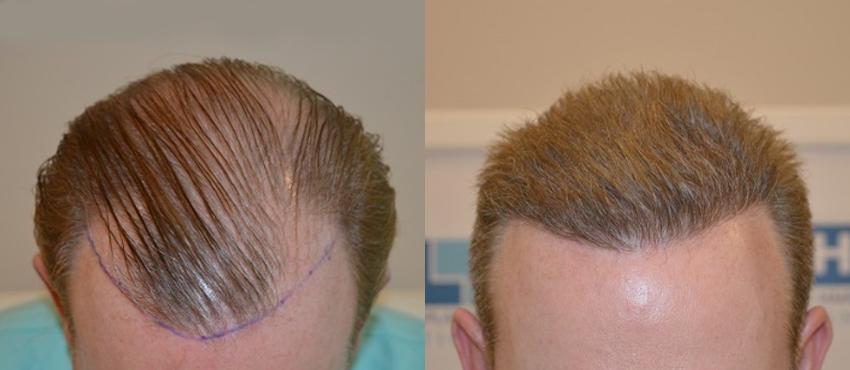Hair transplants are a popular cosmetic procedure that offers a permanent solution for individuals facing hair loss. Over the years, advancements in surgical techniques have improved the success rates and natural appearance of hair transplants. However, like any medical procedure, it is essential to fully understand the process, benefits, risks, and how to find the best hair transplant in USA and the treatment available.
What is a Hair Transplant?
A hair transplant involves transferring hair follicles from one part of the body, typically the back or sides of the scalp, to an area affected by hair thinning or baldness. The donor area usually has dense, healthy hair growth, while the recipient site experiences hair loss.
Hair transplant techniques are mainly of two types:
- Follicular Unit Transplantation: FUT involves removing a scalp strip from the donor area, extracting individual follicles, and transplanting them to the recipient site. This method may leave a linear scar but allows for more grafts in one session.
- Follicular Unit Extraction: FUE harvests individual follicles directly from the donor site, leaving minimal, barely noticeable scars. Nevertheless, several sessions may be required to achieve desired results.
Benefits of Hair Transplant Surgery
Hair transplants offer numerous advantages for those suffering from hair loss. Some of the primary benefits include:
- Natural-looking results: When performed by a skilled surgeon, the transplanted hair can blend seamlessly with existing hair, creating a natural appearance. The hair grows just like normal hair and can be styled, washed, and cut as desired.
- Permanent solution: Unlike temporary options such as wigs, hairpieces, or medications, a hair transplant provides a long-lasting solution to hair loss. The transplanted follicles are typically resistant to hair loss, making the results permanent.
- Boosts self-confidence: Many individuals who undergo hair transplants report a significant improvement in their confidence and self-esteem. Restoring hair often enhances appearance and reduces the psychological impact of hair loss.
- Low maintenance: Once the transplanted hair grows in, it requires no special maintenance beyond regular hair care routines. This makes it a convenient solution for those looking for minimal upkeep after the procedure.
Risks and Potential Complications
While hair transplants are generally considered safe when performed by an experienced surgeon, there are potential risks and side effects. Ordinary risks include:
- Infection: Any surgical treatment carries a slight risk of post-operative infection. Surgeons typically prescribe antibiotics to prevent this, and proper aftercare can reduce the likelihood of complications.
- Scarring: The techniques FUT and FUE can cause scars. FUT often leaves a linear scar at the donor site, while FUE results in tiny, dot-like scars. Although FUE scars are less noticeable, they may still be visible, especially if the patient prefers very short hairstyles.
- Shock loss: It is not uncommon for the transplanted hair to fall out temporarily after the procedure, a phenomenon known as shock loss. This is typically a short-term issue, with new hair growth occurring within a few months.
- Uneven hair growth: In some cases, the transplanted hair may grow unevenly, creating a patchy appearance. Additional sessions or touch-ups may be needed to achieve the desired look.
- Pain or discomfort: Some patients may experience discomfort in the donor and recipient areas following the procedure. Swelling, itching, and mild pain are common but usually subside within a few days.
Best Hair Transplant Options in the USA
When considering a hair transplant, selecting the right clinic and surgeon is critical. The procedure’s success relies a lot on the experience, skill, and technique of the surgeon. Here are key factors to consider when searching for the best hair transplant options in the USA:
- Surgeon’s experience and qualifications: Choose a board-certified surgeon who specialises in hair restoration procedures. Research their background, qualifications, and years of experience to ensure they have the expertise needed to perform the surgery effectively.
- Patient reviews and testimonials: Reading reviews from previous patients can provide insight into the surgeon’s skill and the clinic’s overall reputation. Positive testimonials can indicate consistent, successful results and a high standard of care.
- Before-and-after photos: Many clinics offer galleries showcasing their previous work. Viewing these photos allows you to assess the surgeon’s skill level and the organic look of their work.
- Consultation process: An in-depth consultation serves as the foundation of the hair transplant process, allowing the surgeon to diagnose hair loss, align expectations, and devise a customised treatment plan.
- Technological advancements: Leading clinics often invest in advanced technology to enhance the precision and effectiveness of hair transplants. Consider clinics that use the latest techniques and tools, such as robotic-assisted FUE, for more accurate results.
Recovery and Aftercare
After a hair transplant, it is crucial to follow your surgeon’s post-operative care instructions to ensure a smooth recovery. Common recommendations include:
- Avoid strenuous activity: For the first few days after surgery, patients are advised to avoid physical activity to reduce the risk of complications.
- Keep the scalp clean: Proper hygiene is essential to prevent infection and promote healing. Use gentle shampoos as recommended by your surgeon.
- Protect the scalp: Avoid direct sun exposure and protect the scalp from trauma during the healing process.
- Be patient: Hair growth takes time. It may take several months for new hair to fully emerge, with final results visible around 9-12 months after the procedure.
Conclusion
Hair transplant in Delhi and hair transplants in general offer a permanent and natural solution for individuals dealing with hair loss. While the procedure has many benefits, it’s essential to be aware of the associated risks and choose an experienced surgeon for the best results. By researching clinics, reviewing patient testimonials, and following proper aftercare, patients can achieve a successful hair restoration journey and regain their confidence.

